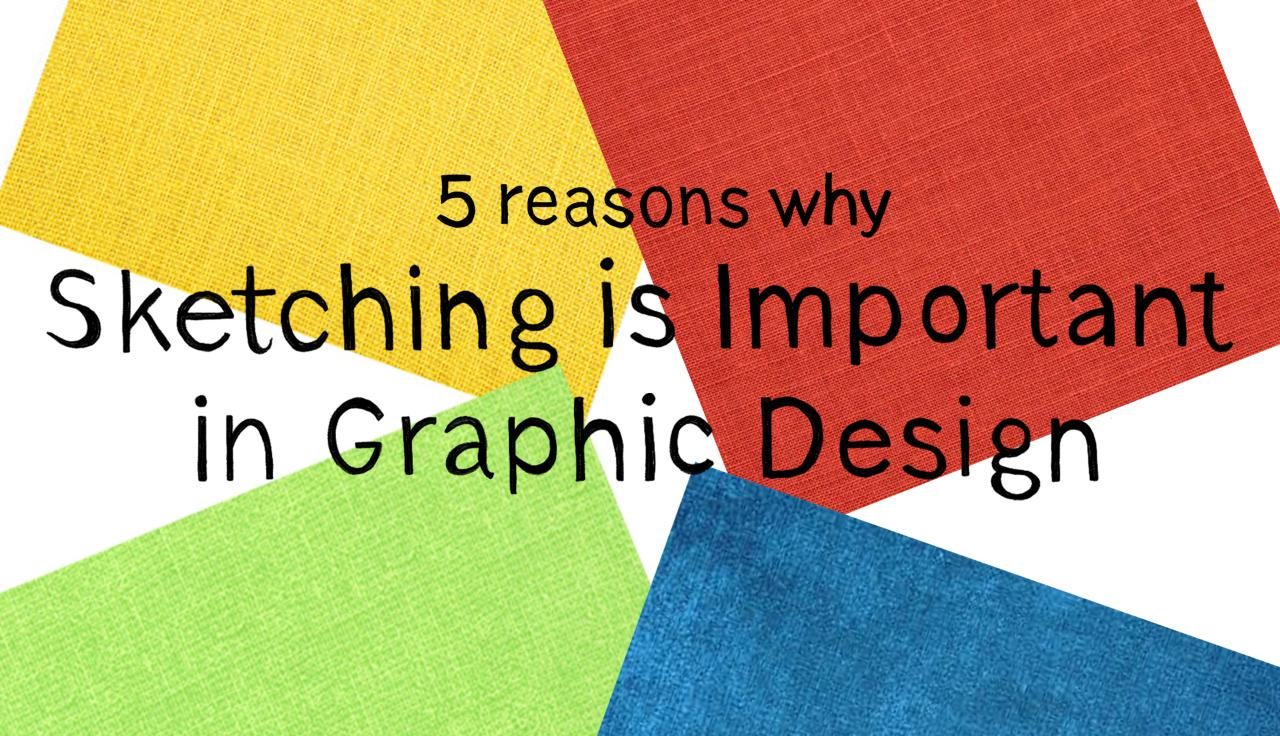Have you ever had some unaccomplished artistic ideas? If you’re into graphic design, you might have had a few or even more.
See, when you’re working in the creative industry a lot of things are somewhat unstable, and ideas are the most unstable things among the others. They come and go, and sometimes it’s very hard to hold a whole lot of them in your had. On the other hand, there are times when you do not really feel inspired and, instead of working on something brand-new and interesting, start questioning your life choices. Not the most pleasant experience, but hey – that’s the part of the creative process, however weird it sounds to you. We all need to recharge sometimes.
So, how do you not let the interesting thought slip away from you when it’s not convenient to start working on it? Sketch it, of course. It’s the easiest, the fastest, and the most interesting way to keep a great idea alive even if the artists themselves forget it. It’s so efficient I sometimes wonder how many great art pieces and designs were saved because the author made a sketch of them. There are lots of ways how designers benefit from sketching, and we’ll talk about them for sure, but first let’s go through some terms.
Table of contents:
What Is Sketching in Graphic Design?
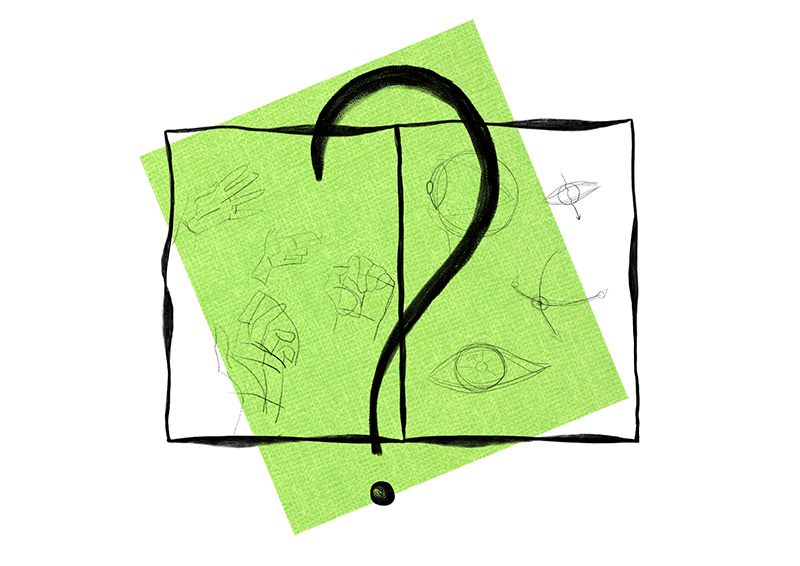
Sketching is a process of creating a quick rough draft of the picture. Usually, creators use a pencil and a piece of paper or a graphics tablet – depending on whatever they have at their disposal at hand. Sketches do not take a lot of time to make, and there’s a whole lot of sketch types. In art, there can be distinguished three main ones: croquis, pochade, and portrait. The first two both translate as “sketch” from French and refer to human/object and color respectively. However, as interesting as it might be, art sketching is not really for us since we are more leaned towards the graphic design side.
There might be many subtypes of sketching in graphic design, and I once stumbled upon an article where there were up to twenty of them. I don’t really remember what types were included, but I clearly remember not liking the concept – that’s too much information for something that should not take very long. From my experience, I would divide graphic design sketching into 3 main categories according to their elaboration. Please don’t judge me for my inability to give cool-and-officially-sounding names.
- An unknown something
The first thing that is important for a good fast sketch is to understand later what exactly was sketched. Depending on how fast the designer has to work, there might be a problem or two with that. However, I believe that authors most often are able to decipher their own work, while to others it will look totally incomprehensible. Fun thing – there might be several unknown somethings depicted side by side when the designer wants to try out different looks for what they’re imagining.
- I know what it is but not sure how it works yet…
Still just a sketch, but a bit more precise. The depicted object has some clear, straight lines, and it is totally understandable what the designer wanted to draw. Same as with the unclear previous type, there might be several different designs or angles.
- Technical drawing
Usually, it is a sketch that is much more detailed and might even have some numbers indicating proportions or even precise sizes of certain elements. The final sketch, often done as a result of work on the first two when the designer has already chosen the final mockup and decided to elaborate it. Also might include different angles and important details. Most often is used in engineering, architecture, and modeling.
Now that we’re familiar with the whole concept of graphic design sketching, let’s move to our next part.
What Is the Importance of Sketching in Graphic Design?
№1: Creative booster

Ideas usually take their final shape during the process of sketching for graphic design when you drag them out of your imagination and visualize them. Actually seeing something you could only keep in your own head before helps a lot to develop the concept. There is no more potent creativity booster than seeing how your idea becomes real. Sketching plays a significant role in it, letting a designer toy with their imagination, illustrate it, and see if whatever they’ve come up with has any development. The first graphic design sketch is a sort of litmus test to any concept: if you are bored or do not like working on it, most likely you won’t achieve the desired result.
№2: Fast and fun
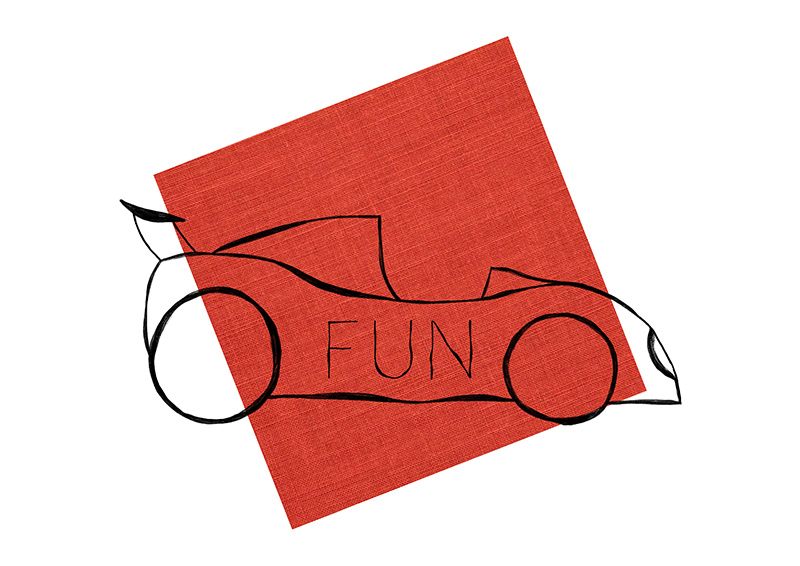
Sketching is one of those project stages that actually are very fun. Whatever you are designing, it is always interesting to see the first variations of what you’re about to create, pick the best ones, turn them upside down, roll them over, turn them around and see how far they can go. Sketching doesn’t take much time, but it’s always very immersive and effective – there’s definitely something so cool about those sloppy fast lines and strokes out of which the first logo or poster prototypes soon will emerge.
№3: No limits
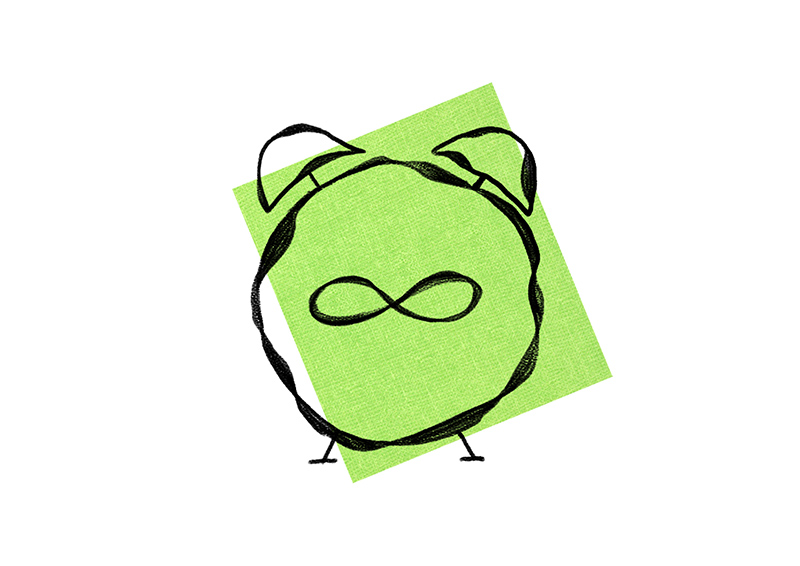
Sketching allows you to do basically anything almost at any time and at any place. There are literally no boundaries, and the only limit is how far your imagination can go following the concept you’ve created. You do not need much, really – everything from a pen and a fresh sketchbook page to a graphics tablet will do. You can sketch sipping hot coffee at your favorite cafe, in a subway, on a bench in the park, or wherever the idea hits you. Again, it doesn’t take much time and it’s very convenient.
It is evident that the role of sketching in the design process is huge. But how exactly can you use all these benefits of sketching in graphic design in your work?
What Are The Uses of Sketching in Graphic Design?
№1: Freedrawing
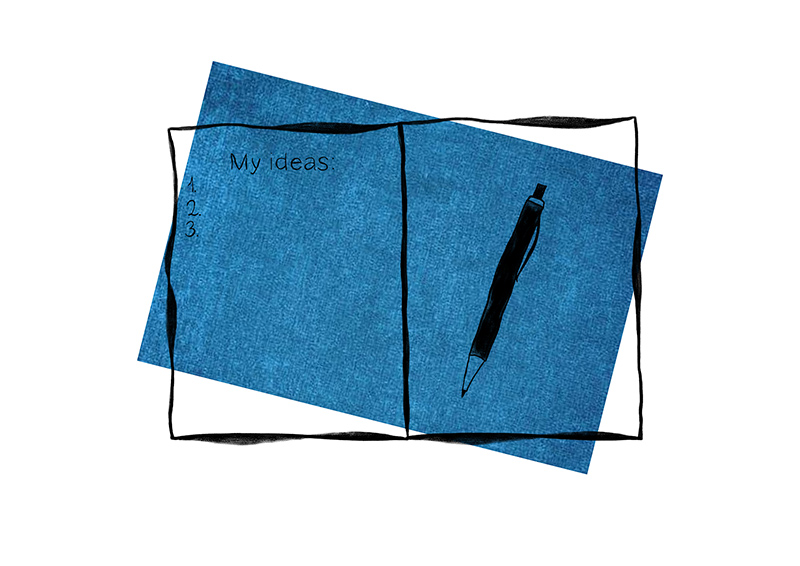
Are you familiar with a freewriting concept? This is a technique that is commonly by writers all over the world to lay down their ideas on paper to sort them out later. With this technique, authors write down whatever comes to their minds; it’s somewhat similar to the stream of consciousness but on paper. After they re-read what they’ve written, they are able to separate interesting ideas, structure and shape them, and continue their development.
I am not sure if such term as “freedrawing” exists, but graphic designers use sketching in a very similar way to freewriting – to see how their ideas really look like outside their mind and correct them if necessary. The sketch is beginning of everything, the backbone to the first draft, or at least to one of its variations.
№2: Means of communication
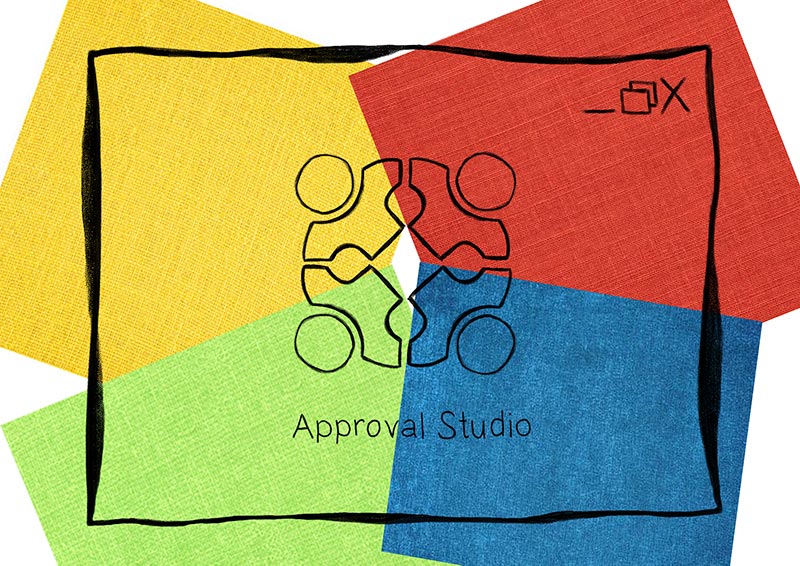
Graphic design sketches are the first step to the final approval of the final artwork. Sure, it’s great when you can meet with the client in person and show them the ideas that you have. However, often it happens so that the client and the design agency are located pretty far away from each other, and the first sketches might have to be reviewed anyway. It will determine whether the team is moving in the right direction and provide the first feedback that is extremely important for shaping the initial idea.
Using sketches as a
pre-production step?

Approval Studio will let you upload those as reference files.
№3: Jumpstarting your thinking process

As I’ve already mentioned, the first sketches usually include lots of variations of the same object or design element. The ideas that strike you quite often appear more specific at first than they turn out to be later and variations can fill that gap. It is hardly possible to get perfect design ideas that the client and their company need at once, and searching for the right option might take quite a while. There are many ways to narrow down the range of possibilities you’ve got, the most certain one is to get as much information from the client and carry out thorough research of the target market. However, it will not eliminate all the options, it will only shorten the list of samples, and you’ll still need to brainstorm possible solutions. Since sketching helps to visualize them, it is an inseparable part of graphic design.
№4: Mistakes are a must!
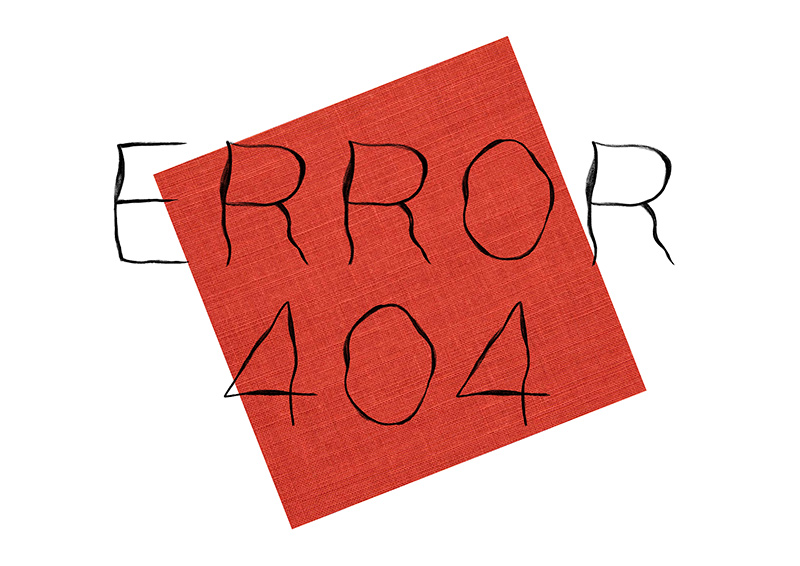
Not only does sketching allow making mistakes, but it also makes them absolutely obligatory! Hardly all variations of the artwork that you’re creating are going to be the successful ones, leaving you to choose the one you simply like the most. Mistakes, together with research and brainstorming will help you to see what you are not supposed to do and narrow down your choices to even more specific ones. Sketching is the very phase of the project where all your errors will serve you more than well, especially in such fields as architectural, industrial, or product design where every mistake can have a very serious cost.
In my experience, it quite often happens that making some mistake in a design variation that was not approved prevents you from making it again with the final mockup. Sketches are very rough images of something that is not created yet, and errors help you cut down the number of roads you can use to get to it. When you notice a mistake, you know what you need to avoid and the whole project path automatically becomes shorter.
№5: Reconstruction of ideas

Sketching enables you to forget, and it is one of the most important its functions and programs. Forgetting is one of the most significant brain processes that happen all the time – our minds need to comprehend gigantic bits of information, and sometimes even the greatest idea can slip away accidentally. The quickness and convenience of sketching can help you visually record the idea on paper or in your device’s memory so that you can go back to it later. It is especially useful when your life tempo is hectic, you are working on several projects simultaneously, or simply at the go at that very moment when your idea comes to mind.
Having made the sketch, you can concentrate on other things that demand your urgent attention. It’s like freeing RAM memory on your device with the processes where the progress is saved so that your gadget could work faster. And since the visual memory of graphic designers is very well-developed, it will not be a problem to revisit your idea even if it looks completely incomprehensible to someone else… well, in most cases at least 🙂
Final Thoughts
All in all, the importance of sketching in design is very hard to overestimate. It seems to be the small and the obvious part of every project without which you basically cannot launch your work. If the designer’s table or desktop is full of various sketches and ideas, it is one of the teeny tiny markers of high professionalism levels. Sketching helps save time, preserve the ideas, and have more fun! Combine it with Approval Studio app, and the speed of your project delivery will skyrocket. Still doubt it? Contact us, and we’ll gladly schedule a tutorial for you and show that everything we say about our software is true! And I, meanwhile, will go and sketch something – writing these articles always creates new ideas in my head.
Hey-ho!
Design approval software you never knew you needed
Try Approval Studio today to start a new era of artwork proofing
Free Trial

 TEAM SOLUTIONS
TEAM SOLUTIONS WORKFLOW SOLUTIONS
WORKFLOW SOLUTIONS



 REVIEW TOOL
REVIEW TOOL PROJECT MANAGEMENT
PROJECT MANAGEMENT TOOLS & INTEGRATIONS
TOOLS & INTEGRATIONS
 CLIENT INTERVIEWS
CLIENT INTERVIEWS









